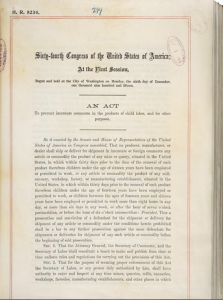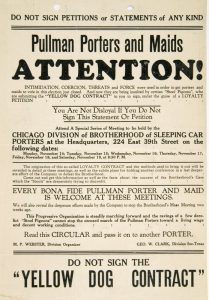The Keating-Owen Child Labor Act of 1916

Keating-Owen Act, signed by U.S. President Woodrow Wilson. Effective September 1, 1916.
The Keating-Owen Child Labor Act is also referred to as “Wick’s Bill”. After lobbying it for quite some time, the following year on September 1st, this act went into effect. The main issues with the Keating-Owen Act, is that this piece of legislation doesn’t give any power to congress in terms of being able to regulate working conditions. Eventually however, it was deemed unconstitutional after the case of Hammer v. Dagenhart had been settled because of how much it overstepped certain boundaries in regards to interstate commerce. It references prohibiting child labor in the interstate commerce of goods, whether it be a 15 year old in the mines, or a 14 year old working into the evening in a factory.
Hammer v. Dagenhart- Debating Child Labor

This is a court case that occurred on Capitol Hill in front of the United States Supreme Court and took place 1918 during the Progressive Era. The case was argued on April 15th through the 16th and was decided on June 3rd. This Supreme Court case’s intended audience was children who were put to labor, most being in poor working environments such as clothing factories. This case’s purpose had been to combat the Keating-Owen Act which was unconstitutional and had not given Congress any power to regulate the working conditions. The main point that’s identified in this case is the court deciding with Dagenhart and making the Keating-Owen Act null and void. This is important to my theme because this case put a stop to unjust labor laws such as the Keating-Owen Act.
DO NOT SIGN THE “YELLOW DOG CONTRACT”

The Norris-Laguradia Act was passed in 1932 and was created to declare the yellow dog contracts as illegal. A yellow dog contract was a document that if signed by the employee, would then essentially prohibit them from joining any sort of union. It also prohibited any federal involvement in interfering in any way with an employees choice to join a union. The flyer above is to let people know the dangers of a yellow dog contract and to direct them away from signing one that their company might possibly offer to them to be be signed.
